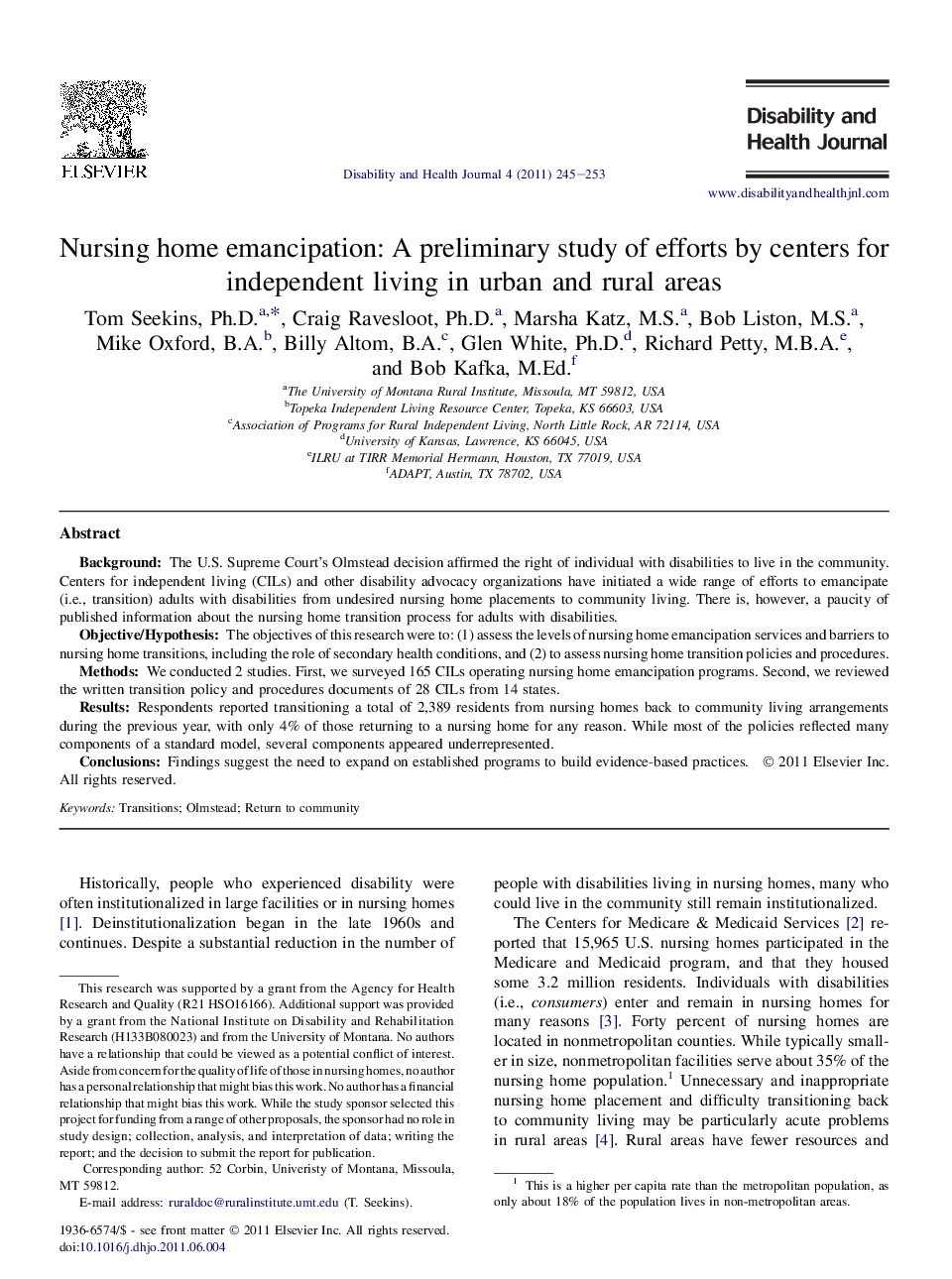| کد مقاله | کد نشریه | سال انتشار | مقاله انگلیسی | نسخه تمام متن |
|---|---|---|---|---|
| 4197530 | 1278926 | 2011 | 9 صفحه PDF | دانلود رایگان |

BackgroundThe U.S. Supreme Court’s Olmstead decision affirmed the right of individual with disabilities to live in the community. Centers for independent living (CILs) and other disability advocacy organizations have initiated a wide range of efforts to emancipate (i.e., transition) adults with disabilities from undesired nursing home placements to community living. There is, however, a paucity of published information about the nursing home transition process for adults with disabilities.Objective/HypothesisThe objectives of this research were to: (1) assess the levels of nursing home emancipation services and barriers to nursing home transitions, including the role of secondary health conditions, and (2) to assess nursing home transition policies and procedures.MethodsWe conducted 2 studies. First, we surveyed 165 CILs operating nursing home emancipation programs. Second, we reviewed the written transition policy and procedures documents of 28 CILs from 14 states.ResultsRespondents reported transitioning a total of 2,389 residents from nursing homes back to community living arrangements during the previous year, with only 4% of those returning to a nursing home for any reason. While most of the policies reflected many components of a standard model, several components appeared underrepresented.ConclusionsFindings suggest the need to expand on established programs to build evidence-based practices.
Journal: Disability and Health Journal - Volume 4, Issue 4, October 2011, Pages 245–253